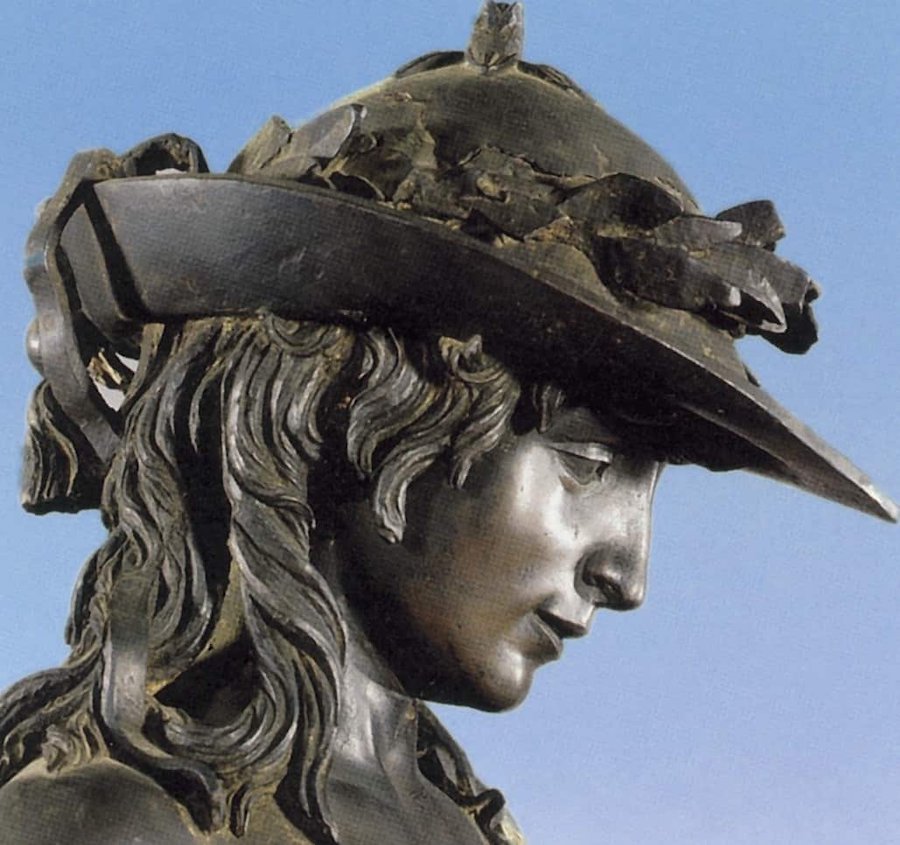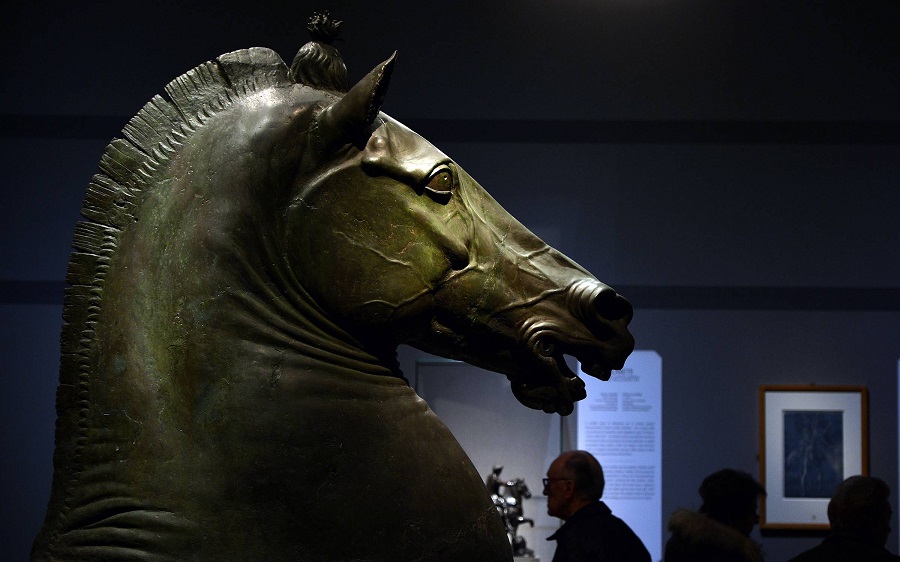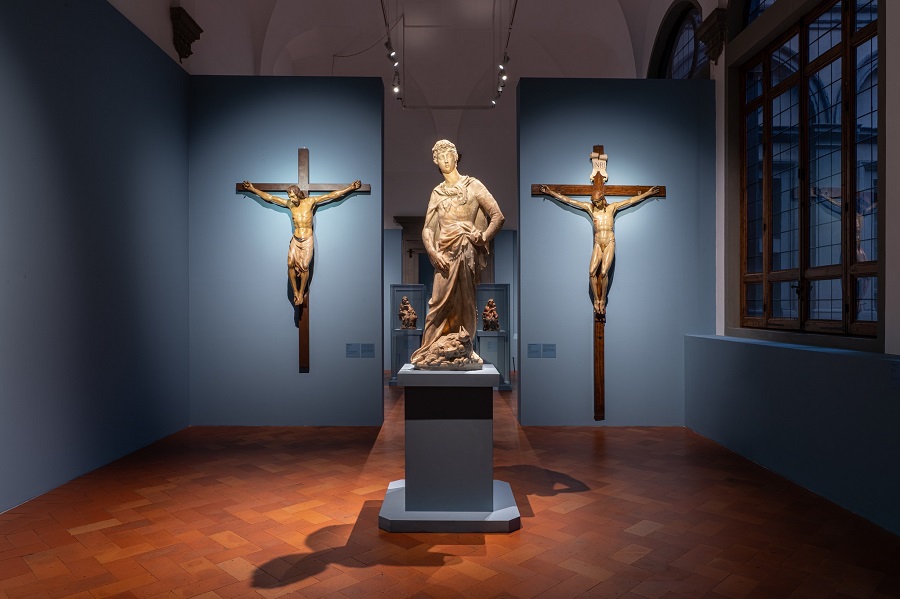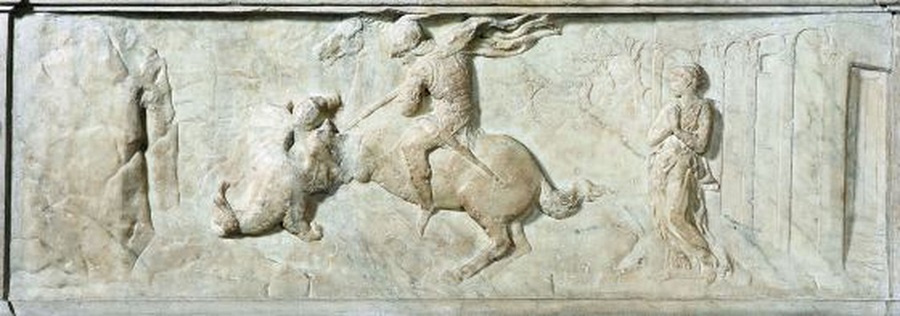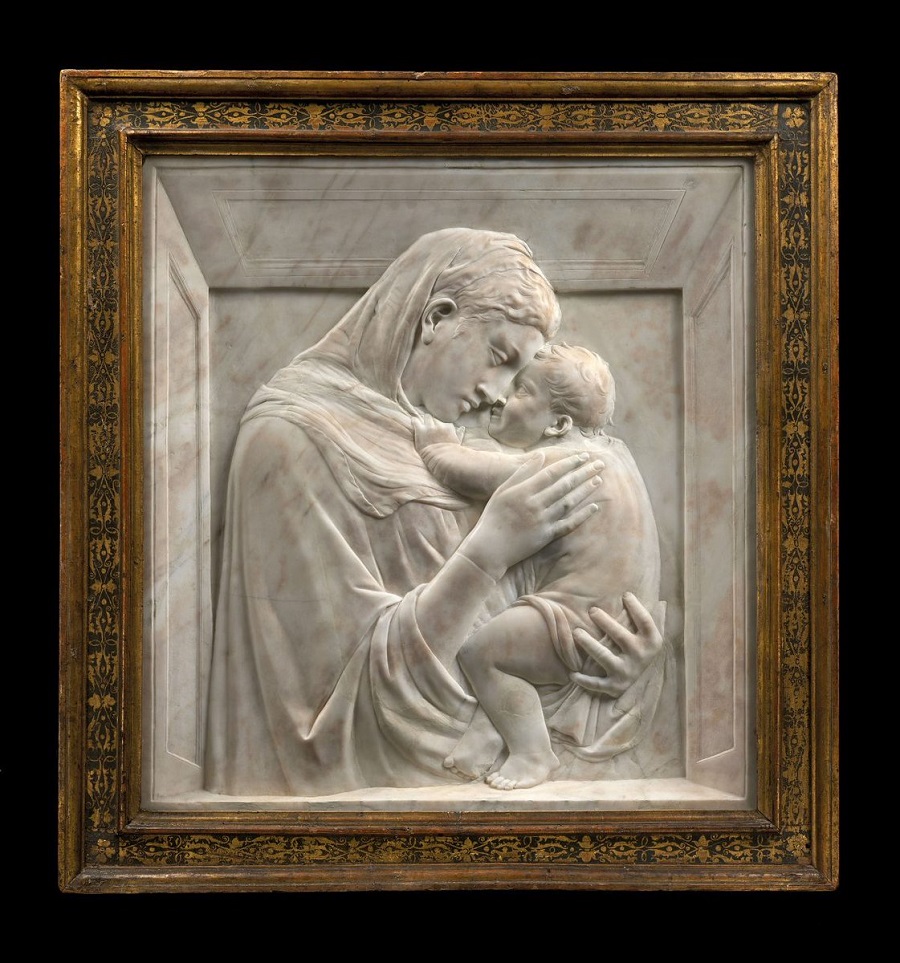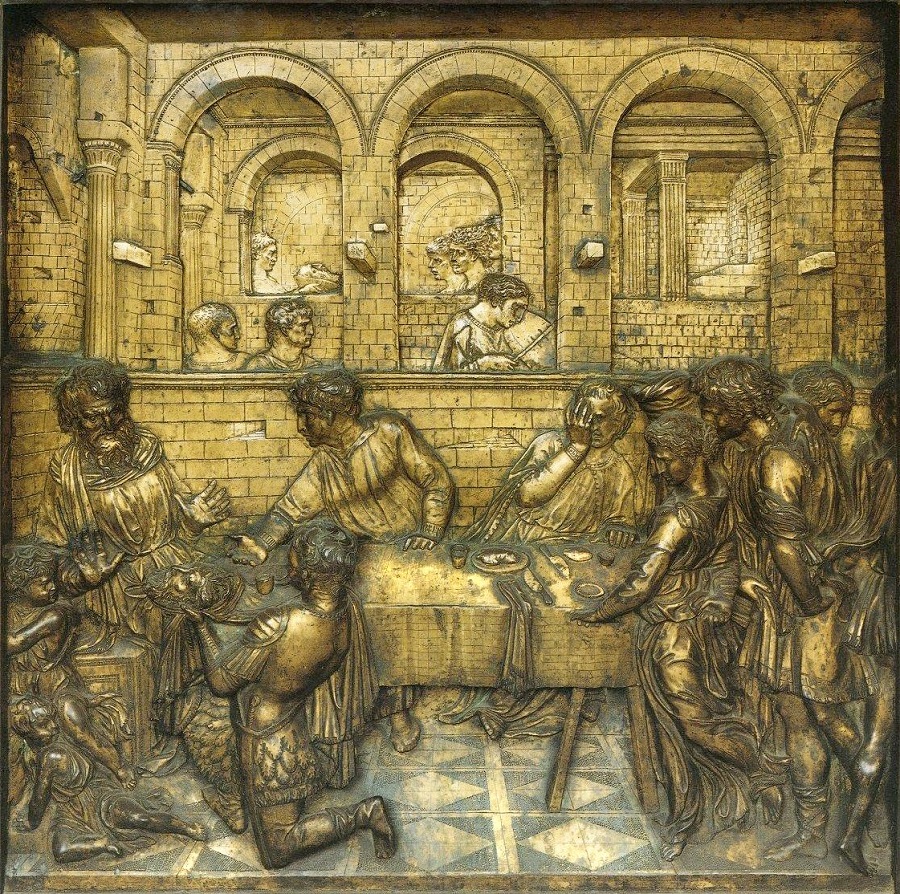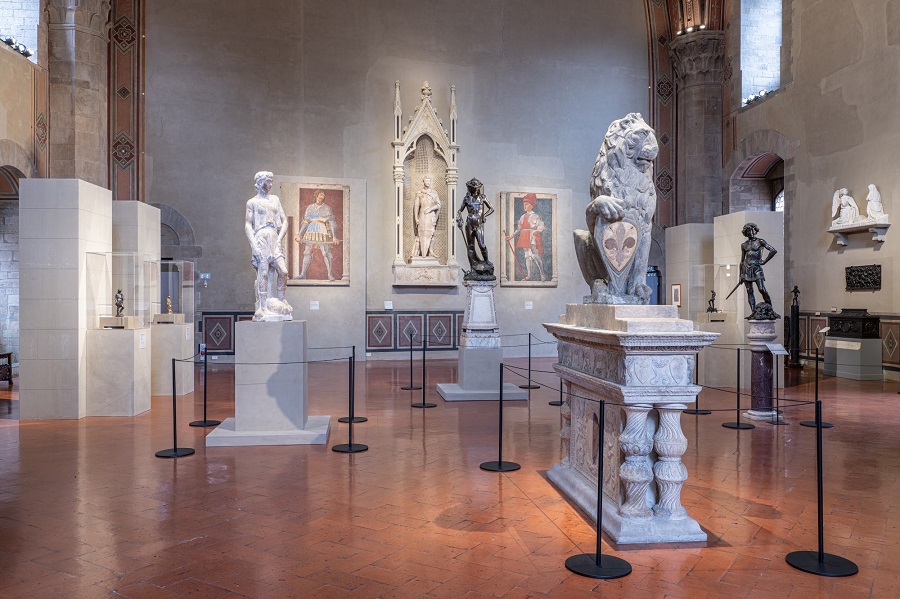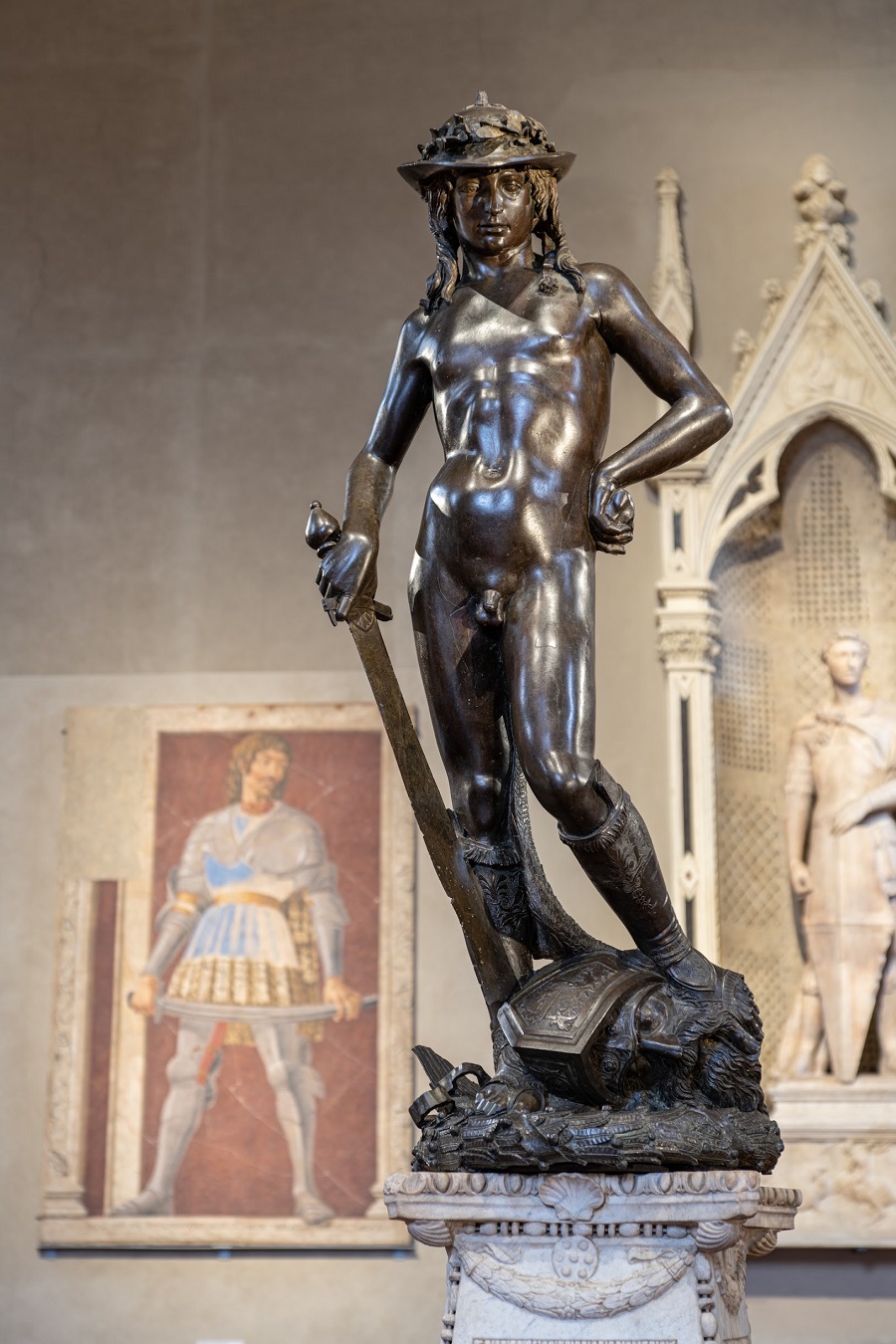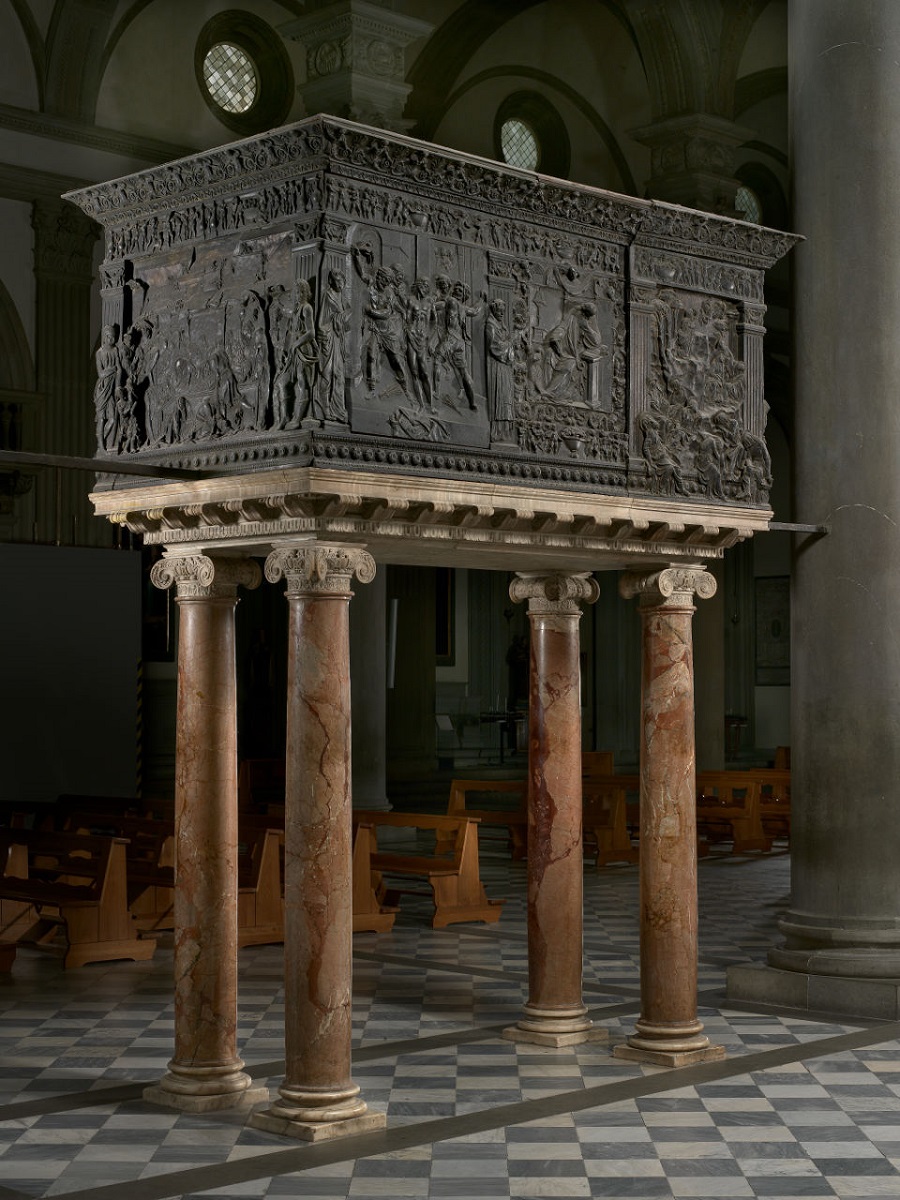Florence, during the first decades of the fifteenth century, was the axis around which the world turned. In among its twenty neighbourhoods with their gonfaloniers, their streets and palaces, their churches and houses, Alberti was writing his treatise “On Painting”, Masaccio had painted the Brancacci Chapel frescoes and his Holy Trinity adorned Santa Maria Novella church, Ghiberti completed the North Door of the Baptistery and Brunelleschi crowned Florence cathedral with a dome which, using never-before-seen techniques, he made to float in its enormity above the Santa Maria del Fiore apse.
Donatello, David (detail, (1435-1440), National Museum of Bargello, Florence
Florence, during the first decades of the fifteenth century, was the axis around which the world turned. In among its twenty neighbourhoods with their gonfaloniers, their streets and palaces, their churches and houses, Alberti was writing his treatise “On Painting”, Masaccio had painted the Brancacci Chapel frescoes and his Holy Trinity adorned Santa Maria Novella church, Ghiberti completed the North Door of the Baptistery and Brunelleschi crowned Florence cathedral with a dome which, using never-before-seen techniques, he made to float in its enormity above the Santa Maria del Fiore apse. The year was 1436.
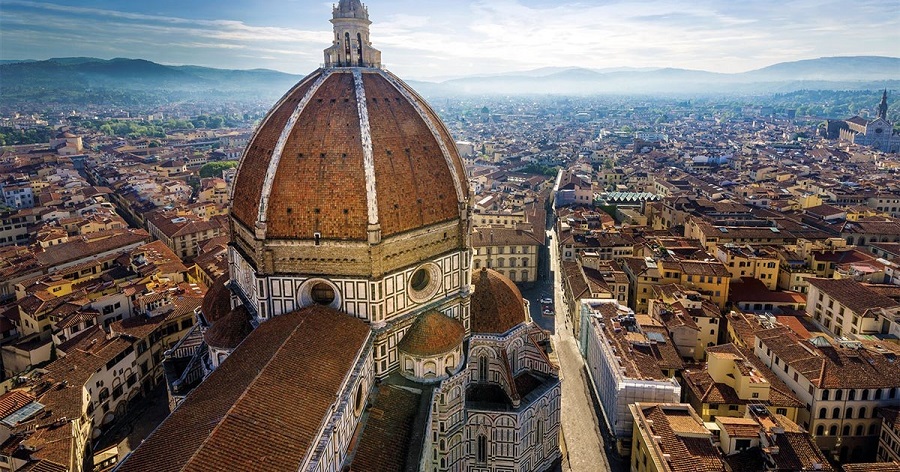
Cathedral of Santa Maria del Fiore, Florence
Meanwhile, in his small workshop on the banks of the Arno, Donatello sculpted the relief of the plinth of Saint George of Orsanmichele. His mastery was to forever revolutionize the principles of sculpture. Six hundred years later, Florence returns light to a world full of darkness with one hundred and thirty works on display throughout the Strozzi Palace and the National Museum of Bargello, in a historic and unrepeatable tribute to its sculptor son. The exhibition carries the name: Donatello, the Renaissance.
Donatello, Horse's Head (1456), National Museum of Archeology, Naples
Donato di Niccolo di Betto Bardi - Donatello being the nickname given him by his family - was born in Florence in 1386. The Donatello family lived on the south bank of the Arno river and were members, through Niccolò (father) and Betto (grandfather), of the wool carders’ guild, one of the most influential in Florentine society at the time. From an early age, he worked with a local goldsmith through whom he discovered metal alloys, while also learning how to sculpt from the stone carvers working on the construction of the Santa Maria del Fiore cathedral. In 1403, he entered the workshop of Lorenzo Ghiberti, a sculptor in bronze who had, the year before, won a competition to create the Gates of Paradise for the Baptistery. Donatello had collaborated with him and had since become friends with Filippo Brunelleschi with whom he travelled to Rome. Little is known about this trip except that, by aiding in the excavation of the ruins of the ancient Empire, Donatello acquired a profound understanding of the ornamentation and classical forms of Roman sculpture, movement, fabric and gesture. This apprenticeship, together with the tutorship of Ghiberti - the greatest exponent of an international Gothic style typified by smooth, curved lines - had a marked impact on the sculptor's style which would evolve into the life-size marble "David" that kickstarts the Florence exhibition today.
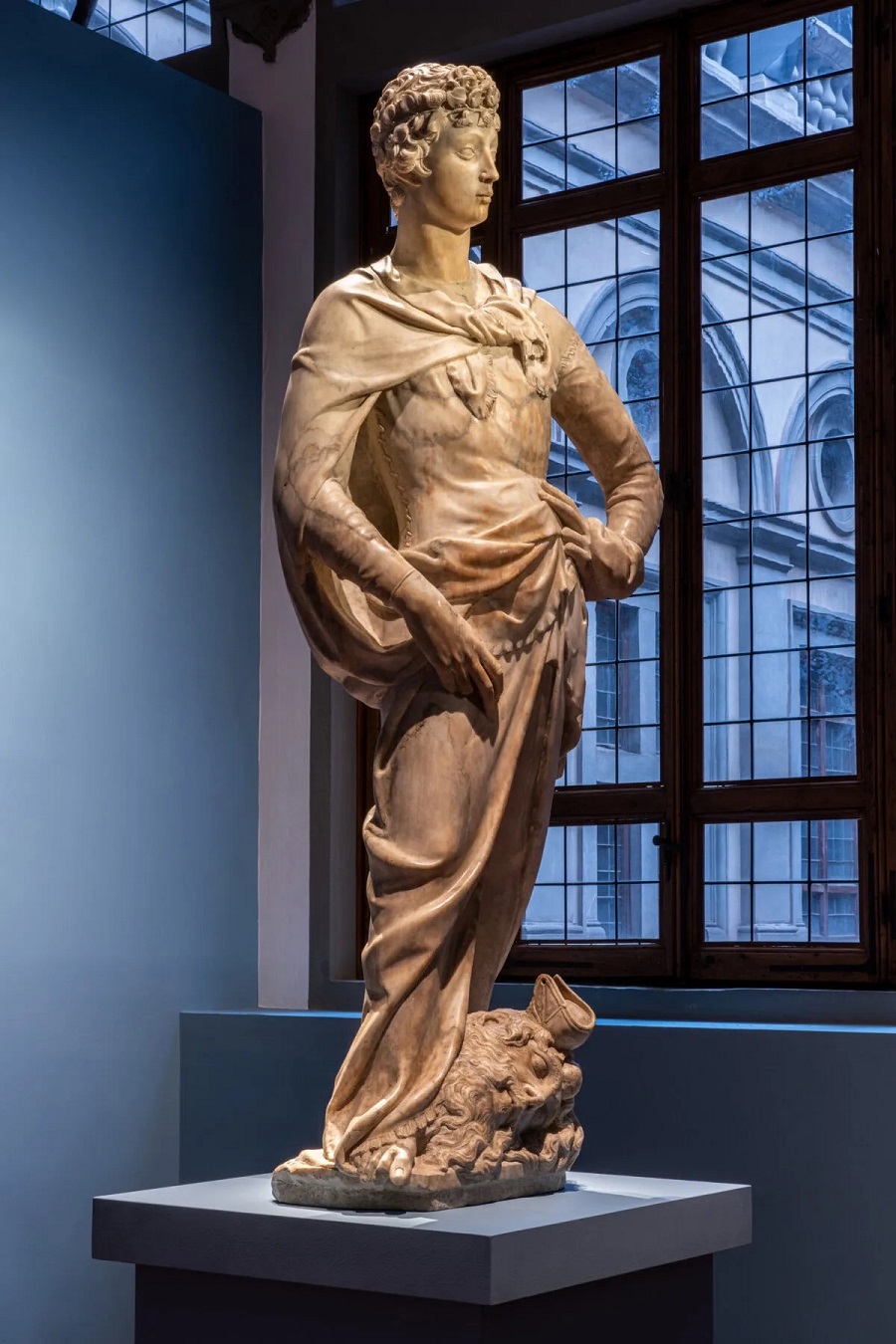
Donatello, David (1408-1416) National Museum of Bargello, Florence
The first room of the Strozzi Palace is breathtaking. "David" (1408), centre stage, was carved by Donatello in his early twenties. He had received a commission for a monumental figure of the King of Judea to form part of a row of statues to act as guardians of the Duomo, anchored atop the buttresses as if miraculously silhouetted against the sky. The work was completed by the end of the same year with all that remained being to lift it into place. As soon as the scaffolding was erected, however, it was found to be too small to create the desired impact. At that elevation, the six-foot high prophet statues looked insignificant. For this reason, the David was positioned in a new, unexpected and more worthy location. The figure of the young biblical hero, also one of the symbols of the Florentine Republic, was purchased by the government for its headquarters in the Palazzo della Signoria. Standing him on a pedestal at ground level proved to better highlight the slight twisting of the torso, the flexing of the leg and an oblique, frowning stare gazing into space. In this exhibition room, the enormous head of Goliath with a rock embedded in his forehead at David's feet is at eye level. And on looking up, we see two chilling crucifixes in painted wood flanking the statue of David. On the left, Donatello’s (1408) and on the right, Brunelleschi’s (1410).
First exhibition room: Donatello's "David" (1408)(centre), Donatello's Crucifix from the Basílica of Santa Croce, Florence (1408) (left) and Brunelleschi's Crucifix from Santa Maria Novella, Florence (1410) (right)
The sculptor’s outlook was maturing. His work was moving away from the Gothic tradition and towards a more personal, more solid style. The years from 1411 to 1413 saw a radical shift in his art that broke free with transformative force. Brunelleschi and Donatello spent hours observing the multiple panoramas and buildings of Florence. Brunelleschi was beginning to understand how geometric shapes underlie the relationship between humans and their environment. Donatello would convey these conclusions through the medium of sculpture. Both artists were luminaries in the discovery of perspective.
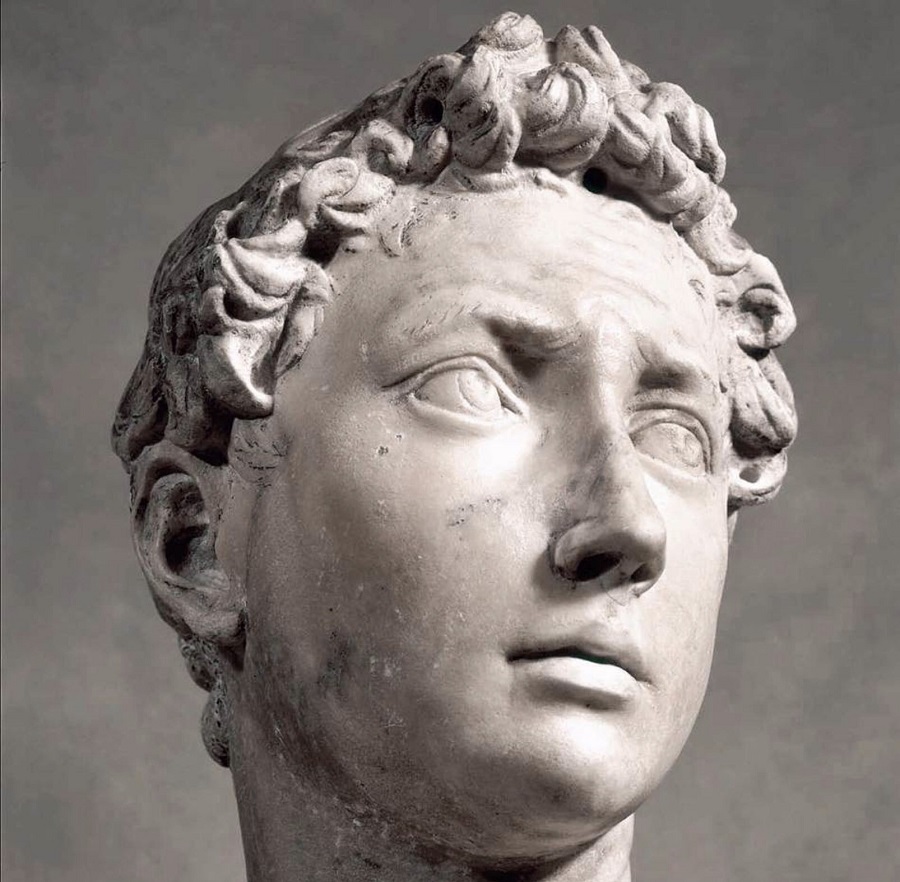
Donatello, Saint George (detail), c.1415-17, National Museum of Bargello, Florence
Donatello now began creating a brand new way of sculpting that he would apply for the first time to the “St George and the Dragon” in the predella panel of the Armaioli tabernacle in Orsanmichele Church and which he chiselled out using “soft stiacciato” (“flattened out”), as Vasari termed it. This technique involved the shallow carving of a relief whose depth and surface projection gradually increased towards the foreground where the figures and objects are closest and the most prominent. In the background, the shapes are just a few millimetres deep, hardly more than a slight incision.
From then onwards, he introduced the “stiacciato” method to his reliefs which were admired throughout Florence and paved the way for other sculptors, inlayers and painters. Brunelleschi's laws of perspective, applied using this technique, allowed the sculptor to virtually and optically multiply space with a hitherto unknown sensory illusion of reality, creating a revelation between the viewer and the work.
Donatello, Saint George and the Dragon (1416-1417), National Museum of Bargello, Florence
In the third room of the Strozzi Palace, behind the “Attis Amorino”, we find the bas-relief of “The Pazzi Madonna” (1422), chosen to be the poster for the exhibition. It is one of the most emotive interpretations of the Madonna and Child of the Renaissance. The mother, with a profile and veil reminiscent of Ancient Greece, holds her son in her arms and brushes her face against his in a gesture of intense sweetness. Her eyes, in which the tragic events at Calvary can be read, are fixed on those of the child she embraces with hands seemingly desperate to protect him. The child, oblivious, smiles showing his milk teeth and clutches his mother’s veil with total naturalness.
Donatello, Madonna Pazzi (1422), Staatliche Museum, Berlin
Also in this room is a small golden panel of brilliant virtuosity – a relief depicting “The Feast of Herod” (1423) from the Baptistery of Sienna. Donatello designed here, as never before, a scene with a Brunelleschian perspective in which the arrangement of the figures and the narration take place in four gradations of depth on a bronze plate. We can see, on approaching the work from the side, that it is no more than a couple of fingers thick but within those few centimetres, a whole story is taking place beneath the arches of a palace’s myriad rooms. In a foreground full of details, characters and gestures, Herod holds out his arms in rejection while a kneeling servant presents him with the head of John the Baptist on a platter. The rest of the characters allow the sculptor to portray an array of hairstyles, drapery, hand movements, musical instruments and terrified children fleeing the scene via its frame.
Donatello, The Feast of Herod (1423-1427), Baptistery of San Giovanni, Sienna
The Bargello Palace was built in 1255 as the seat of the Florence Consistory and was later used as a prison. The Greater Council Room is presided over by three Donatello works – “Saint George”, set in a high niche where he appears solemn and distant, his torso turned slightly and his frown focussed somewhere in the distance; “Marzocco”, the emblematic lion of the city and the bronze “David” that presides over this grand Gothic room.
Donatello Room, National Museum of Bargello, Florence
This “David” was a statue designed to be raised on a column and viewed from below. When Donatello thought of reviving this motif, the idea of a column, of bronze metal and of a nude figure became paramount. His choice was of a noble biblical character, prototype of Christ and emblematic shepherd of the Florentina libertas. Donatello deliberately distorted his sculpture’s body in order for it to be perfectly proportioned when seen at this level. The victor thus floated above Goliath's severed head while he gazed vainly at the crowd.
Donatello, David Victorious (1435-1440), National Museum of Bargello, Florence
“David” was a statue designed to be raised on a column and viewed from below. When Donatello thought of reviving this motif, the idea of this column, of bronze metal and of a nude figure became paramount. His choice was of a noble biblical character, prototype of Christ and emblematic shepherd of the Florentina libertas. Donatello deliberately distorted his sculpture’s body in order for it to be perfectly proportioned when seen from eye level. The victor thus floated above Goliath's severed head while he gazed vainly at the crowd.
“David”, cast for Cosimo de’ Medici, symbolizes among other things the relationship between the sculptor and the illustrious Florentine family. The ambition of Cosimo and Lorenzo de' Medici, fulfilled in 1434 with the return of the brothers from exile and materialized in the commissioning of a work that symbolized power. At first, this “David” presided over the main entrance of the “Casa Vechia” but was later transferred to the new palace on the Vía Larga. It was the first in-the-round nude figure sculpted in Italy since the Roman Empire. The adolescent, a disdainful ephebe whose fine face is framed by cascades of curls, wears a picturesque hat and a dismissive smile whilst his posture, in slight contrapposto, is an audacity of balance.
All decisions concerning “David” were always made with the agreement of Cosimo the Elder, Donatello's main supporter and patron. Vasari tells us that Donatello died "in his little house on the Via del Cocomero", near the site now occupied by the Galleria dell'Accademia. By then he had already completed what would be his very last work, the impressive pulpits of San Lorenzo, the church linked to the Medici. His workshop was located next to the Opera di Santa Maria del Fiore. He had previously moved too many times to mention here but his final resting place has never changed. It is inside the crypt of San Lorenzo, just a few metres from the tomb of Cosimo the Elder.
Donatello, Pulpits of San Lorenzo (1460), Florence
Donatello, the Renaissance
Strozzi Palace and National Museum of Bargello
Via del Proconsolo 4, Florence
Curator: Francesco Caglioti
19 March - 31 July 2022
(Translated from the Spanish by Shauna Devlin)
- Donatello: Sculpting the Renaissance - - Alejandra de Argos -


